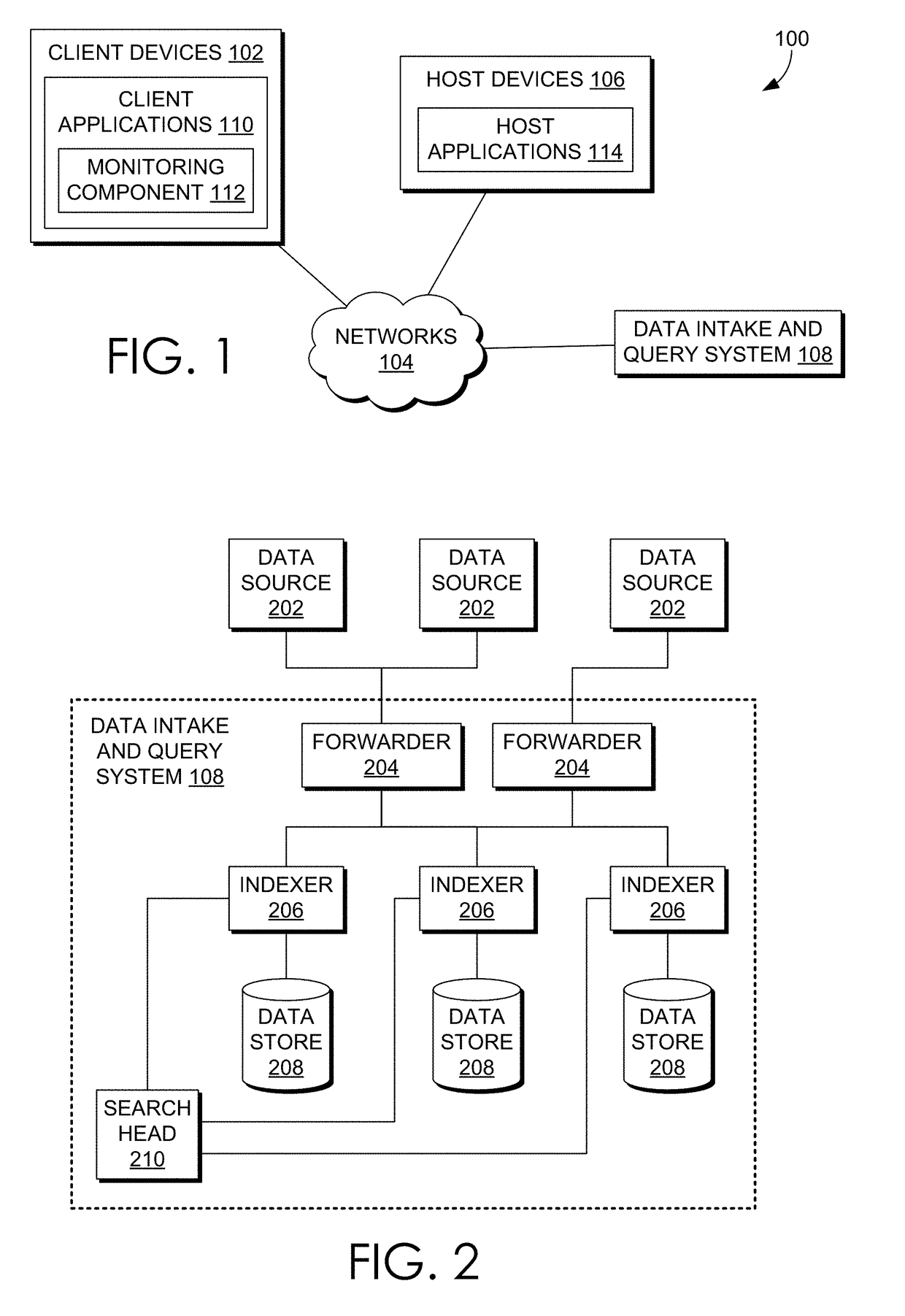Security monitoring of network connections using metrics data
a network connection and security monitoring technology, applied in the field of computer network security, can solve the problems of networked computing devices being vulnerable to various kinds of attacks, each of these conventional approaches has certain drawbacks, and malicious network content identification, so as to increase the efficiency and accuracy of security monitoring, avoid disadvantages, and increase the effect of efficiency and accuracy
- Summary
- Abstract
- Description
- Claims
- Application Information
AI Technical Summary
Benefits of technology
Problems solved by technology
Method used
Image
Examples
Embodiment Construction
[0032]In the following description, numerous specific details are set forth to provide a more thorough understanding of the present invention. However, it will be apparent to one of skill in the art that embodiments of the present invention may be practiced without one or more of these specific details.
System Overview
[0033]Embodiments are described herein according to the following outline:[0034]1.0. General Overview[0035]2.0. Operating Environment[0036]2.1. Host Devices[0037]2.2. Client Devices[0038]2.3. Client Device Applications[0039]2.4. Data Server System[0040]2.5. Data Ingestion[0041]2.5.1. Input[0042]2.5.2. Parsing[0043]2.5.3. Indexing[0044]2.6. Query Processing[0045]2.7 Field Extraction[0046]2.8. Example Search Screen[0047]2.9. Data Models[0048]2.10. Acceleration Techniques[0049]2.10.1. Aggregation Technique[0050]2.10.2. Keyword Index[0051]2.10.3. High Performance Analytics Store[0052]2.10.4. Accelerating Report Generation[0053]2.11. Security Features[0054]2.12. Cloud-Based ...
PUM
 Login to View More
Login to View More Abstract
Description
Claims
Application Information
 Login to View More
Login to View More - R&D
- Intellectual Property
- Life Sciences
- Materials
- Tech Scout
- Unparalleled Data Quality
- Higher Quality Content
- 60% Fewer Hallucinations
Browse by: Latest US Patents, China's latest patents, Technical Efficacy Thesaurus, Application Domain, Technology Topic, Popular Technical Reports.
© 2025 PatSnap. All rights reserved.Legal|Privacy policy|Modern Slavery Act Transparency Statement|Sitemap|About US| Contact US: help@patsnap.com



